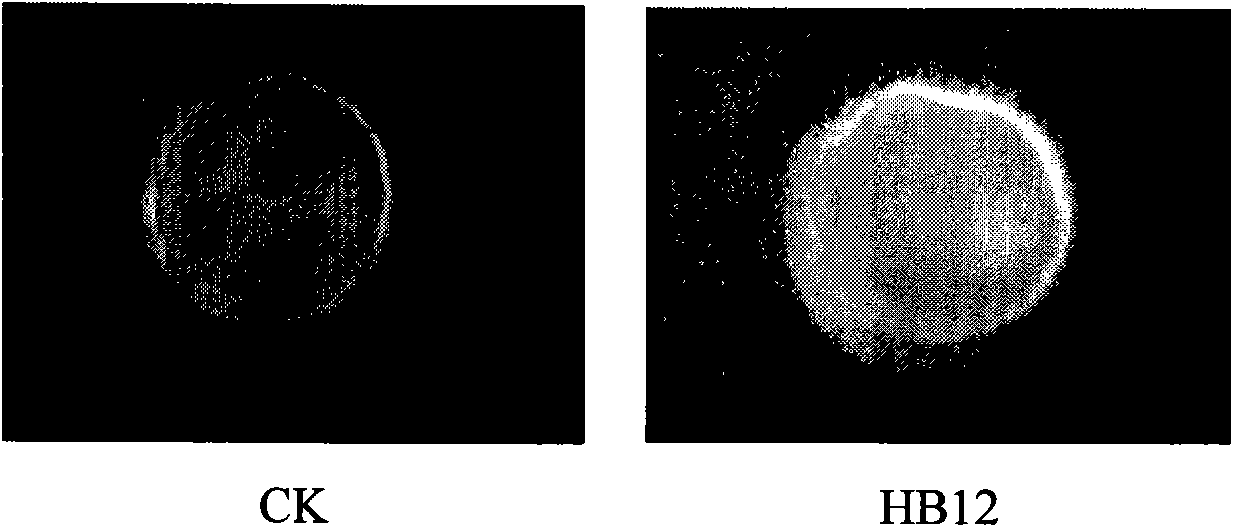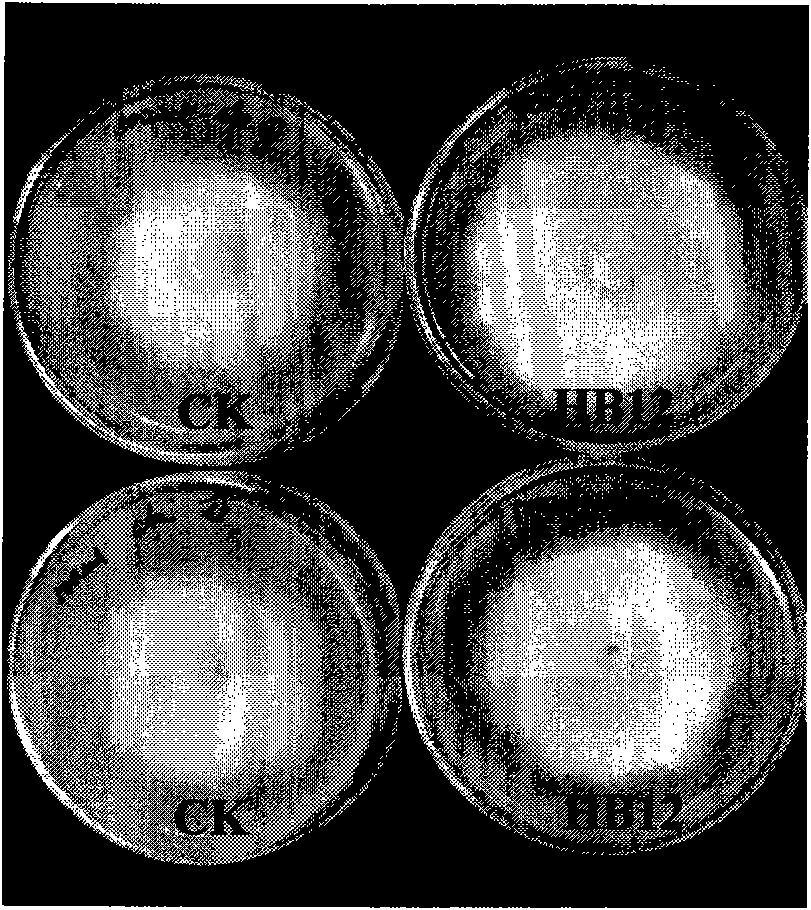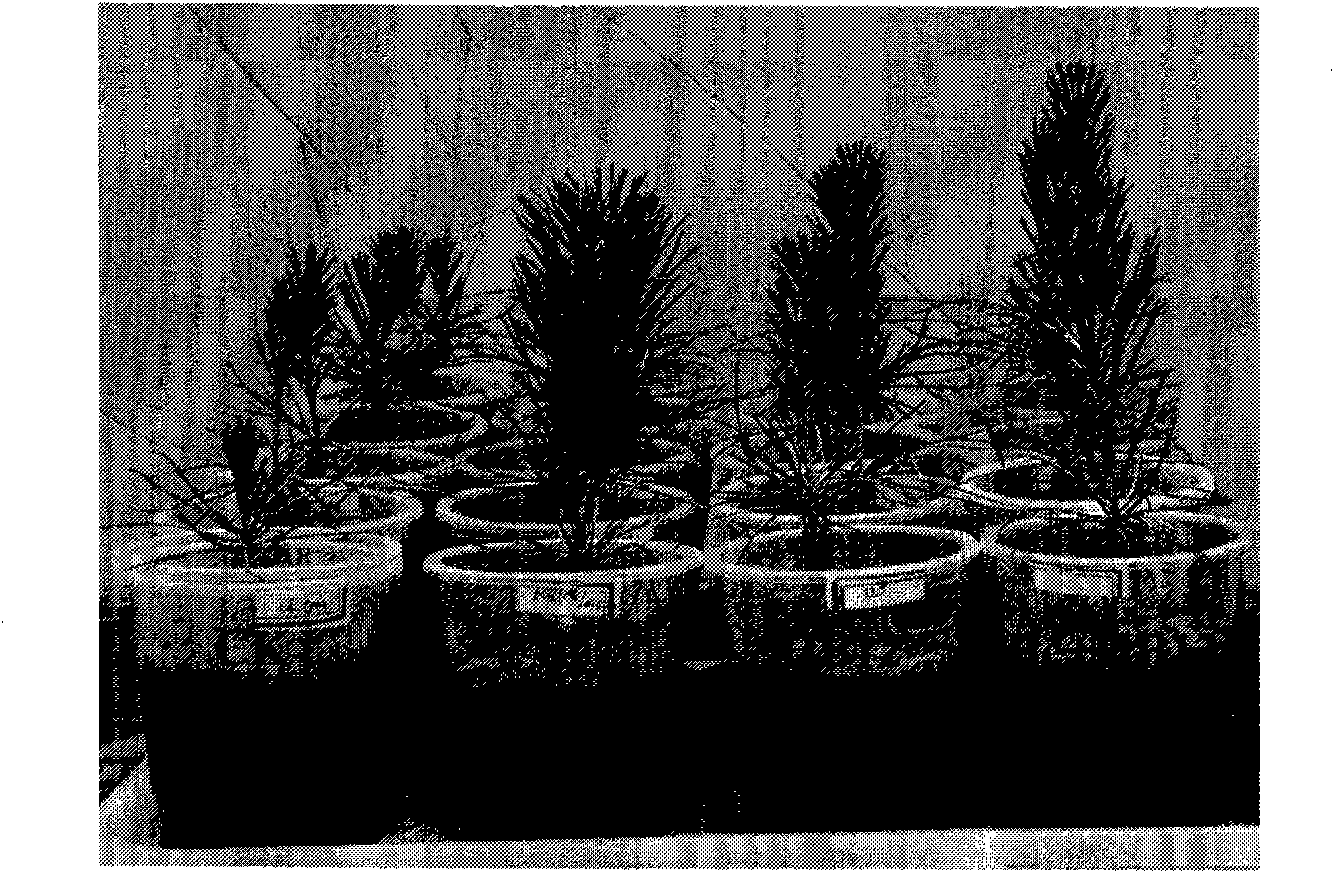Bacillus cereus ectotrophic mycorrhiza helper bacteria and use thereof
A technology of Bacillus cereus and ectomycorrhizal, applied in the direction of application, bacteria, biocide, etc.
- Summary
- Abstract
- Description
- Claims
- Application Information
AI Technical Summary
Problems solved by technology
Method used
Image
Examples
Embodiment 1
[0024] Embodiment 1: the growth-promoting effect of bacillus cereus HB12 to boletus deliciosa (Be)
[0025] After activating the bacteria to be tested, use an inoculation loop to inoculate a small amount into a 100mL Erlenmeyer flask containing 50mL TSA liquid medium, and incubate at 28°C with shaking at 160r / min for 72h. Pour the bacterial suspension into a sterilized centrifuge tube, centrifuge at 5000r / min at 4°C for 5min, pour off the supernatant, then wash the bacteria twice with normal saline, and finally add physiological Saline, after mixing, it will be the bacterial cell suspension of HB12 strain (containing about 5×10 8 cfu / mL). At the same time, draw the supernatant with a sterile syringe, and filter it with a bacterial filter (the filter membrane has a pore size of 0.22 μm and a diameter of 0.25 mm), which is the sterile filtrate of the HB12 bacterial strain.
[0026] (1) Determination of growth-promoting effect of Bacillus cereus HB12 cell suspension on boletus ...
Embodiment 2
[0039] Example 2: The growth-promoting effect of the interaction between Bacillus cereus HB12 and Boletus deliciosa (Be) on black pine.
[0040] Cultivation of sprouts: Black pine seeds are soaked in warm water at 60°C for 24 hours to accelerate germination, soaked in 0.5% potassium permanganate solution, sterilized for 2 hours, rinsed with tap water for 1 hour, sown in sterilized sand, and placed in 25 Cultivate in a greenhouse at ℃, and cut the roots and transplant the seedlings when they grow to the cotyledon stage.
[0041] Potted substrate: The substrate soil was collected from the back hill of Nanjing Forestry University campus, and the soil sample was sieved by 1.01×10 6 Pa sterilize for 90 minutes, cool down and set aside.
[0042] Preparation of Bacillus cereus HB12 bacterial cell suspension: After activating the test bacteria, use an inoculation loop to inoculate a small amount into a 100mL Erlenmeyer flask containing 50mL TSA liquid medium, culture at 28°C and shak...
Embodiment 3
[0048] Embodiment 3: bacillus cereus HB12 is to rhizoctonia (Rhizoctonia sp.) plate bacteriostasis
[0049] Inoculate the Bacillus cereus HB12 strain activated on the NA slant by streaking on both sides of the PDA plate, and then use a puncher with a diameter of 5mm to punch out the same quality and the same amount of bacterial blocks from the PDA plate culture of the pine seedling damping-off disease pathogen. Point in the middle of the plate. Incubate at 28°C for 7 days to observe the presence or absence of the inhibition zone, and record its width. From Table 5 and Figure 4 It can be seen that HB12 has an antagonistic effect on the pathogenic mycobacteria Rhizoctonia sp. Compared with the control, the bacteriostatic rate reached 44.2%.
[0050] Table 5 Inhibition of Bacillus cereus HB12 to Rhizoctonia sp.
[0051]
PUM
 Login to View More
Login to View More Abstract
Description
Claims
Application Information
 Login to View More
Login to View More - R&D
- Intellectual Property
- Life Sciences
- Materials
- Tech Scout
- Unparalleled Data Quality
- Higher Quality Content
- 60% Fewer Hallucinations
Browse by: Latest US Patents, China's latest patents, Technical Efficacy Thesaurus, Application Domain, Technology Topic, Popular Technical Reports.
© 2025 PatSnap. All rights reserved.Legal|Privacy policy|Modern Slavery Act Transparency Statement|Sitemap|About US| Contact US: help@patsnap.com



